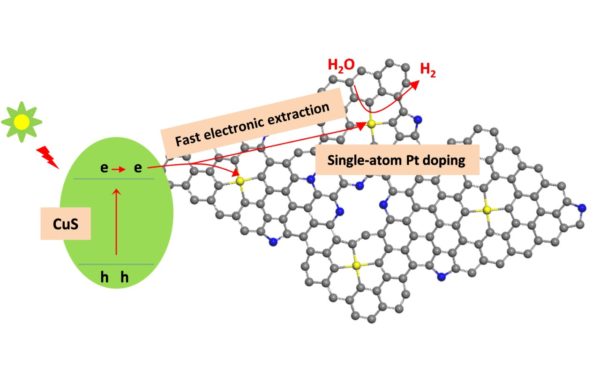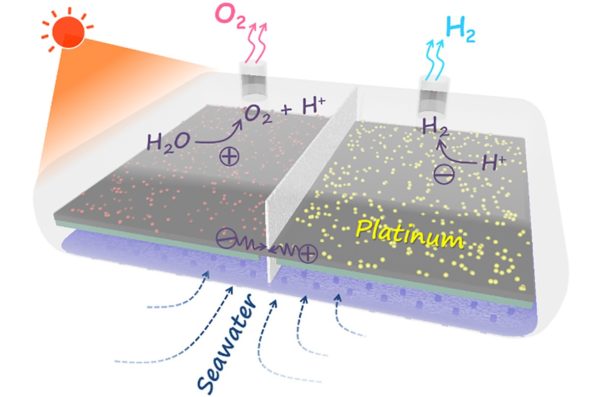Researchers from Swinburne University’s Centre for Translational Atomaterials and Shaanxi Normal University have managed to develop a novel catalyst which is capable of producing high-performance solar light-triggered hydrogen from seawater. If there is one thing we all know about seawater, it’s that there is a lot of it, so it is no surprise that this line of scientific discovery has great potential.
In order to utilise this new catalyst, the researchers also had to develop a prototype device known as the ‘Ocean-H2-Rig’ which is able to float on the ocean surface producing green hydrogen from seawater.
One of the easiest and greenest ways to produce hydrogen is through photocatalytic water splitting, which uses solar energy to split water into its composite atoms, securing the hydrogen and harmlessly emitting the oxygen.
The novelty of the single-atom platinum catalyst these researchers have developed is that the photo-generated electrons and holes triggered by solar radiation do not try to recombine, a saving which greatly improves hydrogen production efficiency.

Image: Swinburne University

Image: Swinburne University
Lead author of the research paper published in Angewandte Chemie International Edition, Tianyi Ma, said that the team “used the single-atom platinum catalyst as the electron extractor. It is synthesised by a scalable and low-cost calcination method, easily produced at large scale.” Moreover, Ma continued, “The high solar-to-hydrogen conversion efficiency is what we need for industrial application.”
According to Baohua Jia, Founding Director of the Centre for Translational Atomaterials, the reusable catalyst “promotes highly efficient hydrogen production with an outstanding quantum yield of 22.2% under LED-550 illumination, which stands among the best catalysts ever reported.”
The idea of “Solar Rigs” floating on the world’s oceans converting seawater to hydrogen fuel is not a new one. In 2018 scientists from Columbia University in the U.S. developed a device called “a floating photovoltaic electrolyzer”. Columbia’s Daniel Esposito even worked out how much of the ocean’s surface would need to be covered by giant “solar fuel rigs” in order to generate enough hydrogen fuel to replace the 2018-levels of global oil use, telling Smithsonian Magazine 63,000 square miles (approximately 163,169 square kilometres), or an area equivalent to the state of Florida. Sounds like a fair bucket, but actually that figure corresponds to about 0.045% of our terraqueous globe’s oceanic surface.
Of course, none of this is to mention the enormous obstacles this technology would have to overcome, not only technically and materially but environmentally. Which is to say, metals like platinum and titanium are expensive and the ocean is a truculent place – the sea giveth and the sea taketh away.
Nevertheless, Australian researchers are on the cutting-edge of this promising line of green hydrogen technology.
This content is protected by copyright and may not be reused. If you want to cooperate with us and would like to reuse some of our content, please contact: editors@pv-magazine.com.








2 comments
By submitting this form you agree to pv magazine using your data for the purposes of publishing your comment.
Your personal data will only be disclosed or otherwise transmitted to third parties for the purposes of spam filtering or if this is necessary for technical maintenance of the website. Any other transfer to third parties will not take place unless this is justified on the basis of applicable data protection regulations or if pv magazine is legally obliged to do so.
You may revoke this consent at any time with effect for the future, in which case your personal data will be deleted immediately. Otherwise, your data will be deleted if pv magazine has processed your request or the purpose of data storage is fulfilled.
Further information on data privacy can be found in our Data Protection Policy.